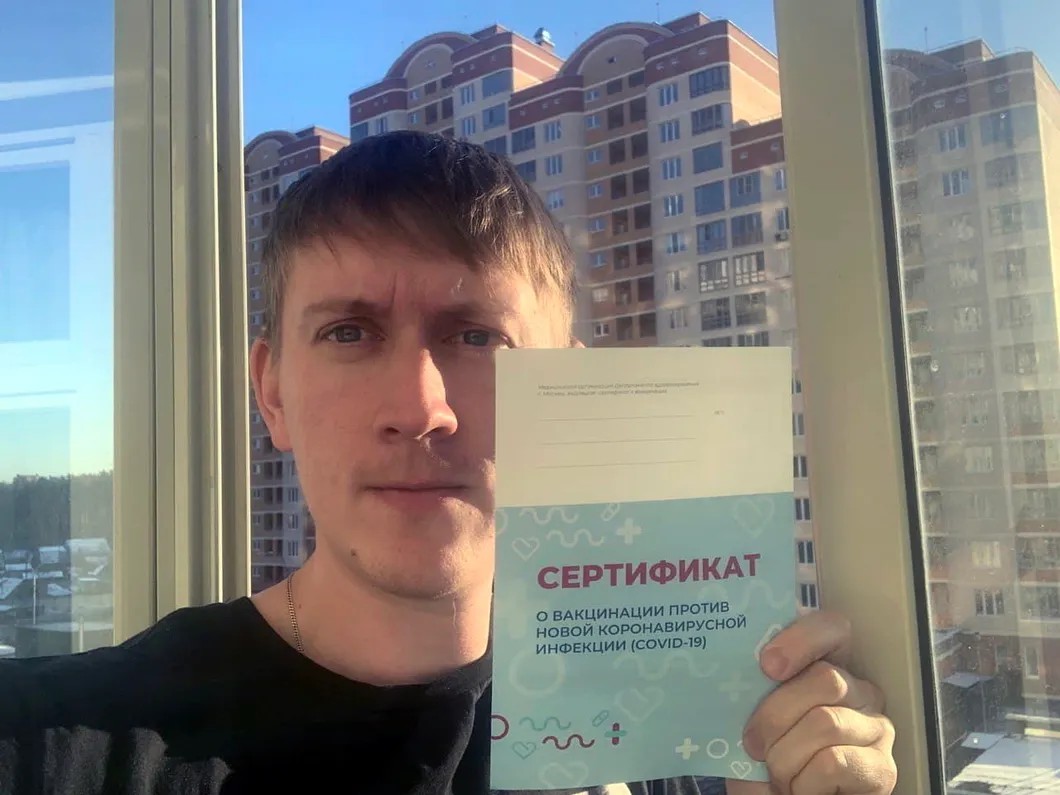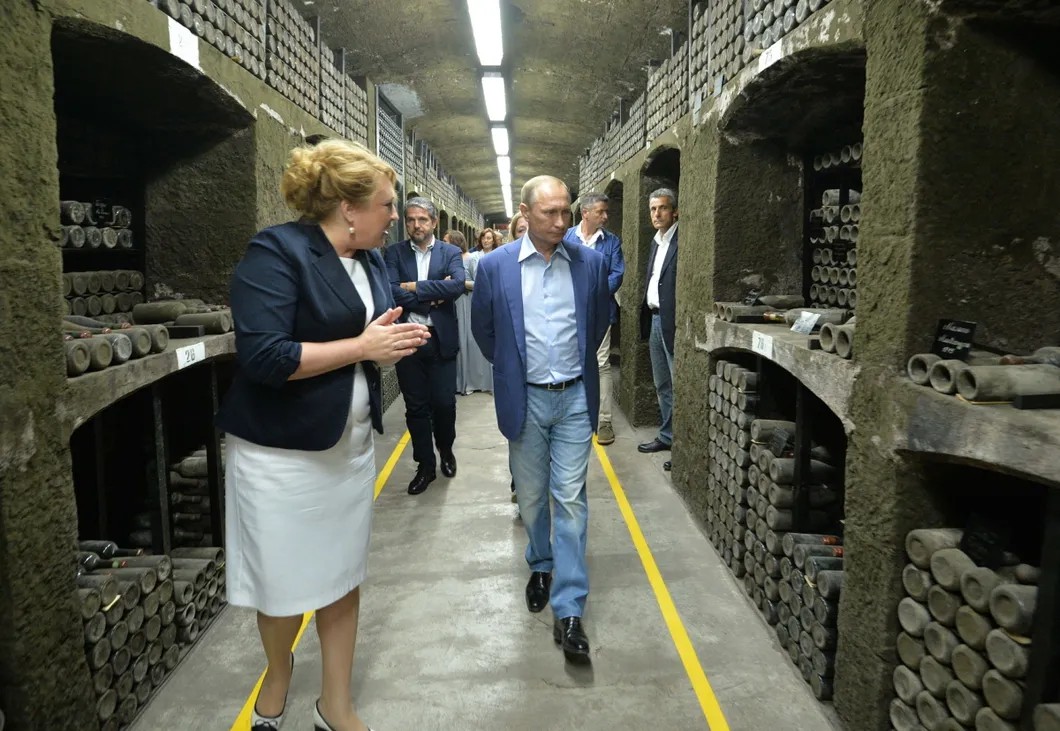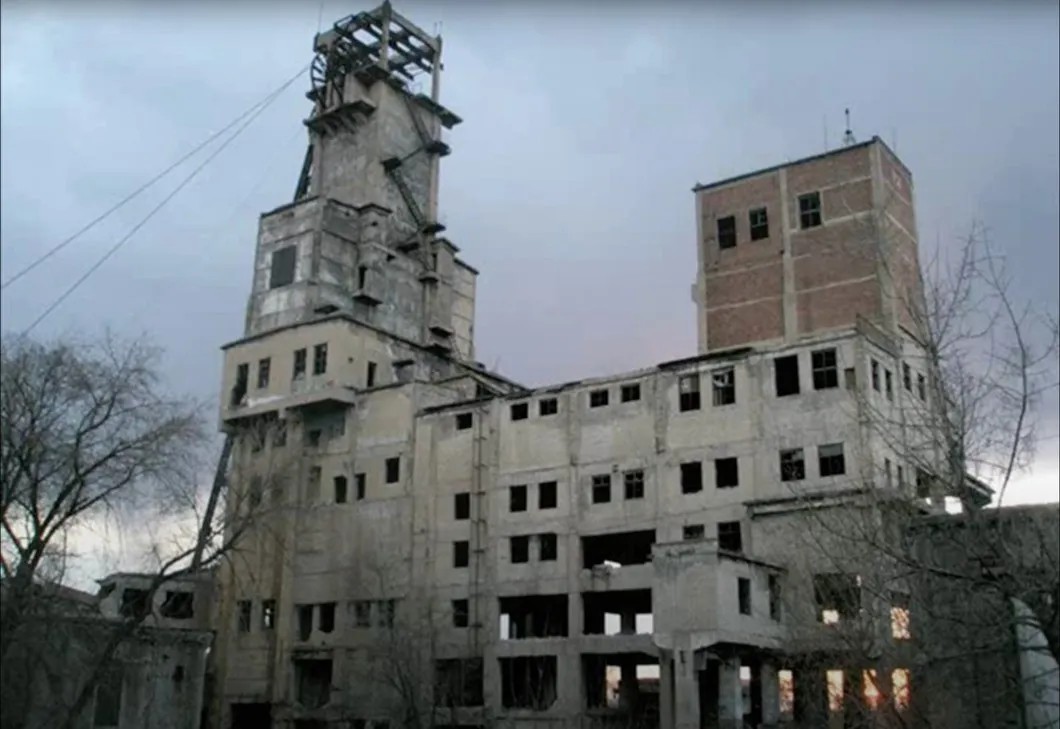This Week’s Highlights
Novaya Gazeta’s correspondent gets vaccinated with Russian Covid-19 vaccine and finds the whole process surrounded by confusion, secrecy, and side effects; a major business empire in Russian-annexed Crimea snatched by Putin’s friend; plus, we report from Russia-backed statelets of Eastern Ukraine that face impending nuclear disaster.
Want to get the full story? Click the links below for full-length articles in Russian.
Sputnik V Side Effects, Documented
Despite facing severe roadblocks, Russian officials roll out a Covid-19 vaccination campaign using the Russian-made Sputnik V. Novaya Gazeta’s Special Correspondent Ivan Zhilin signed up to get vaccinated in Moscow. He documented his whole disturbing experience for the public amid a lack of official information about how the vaccine actually works and what side effects might be.
WHERE IS EVERYONE? Zhilin was able to register to get vaccinated through the Moscow Mayor’s website. The Mayor’s office said that around 20,000 people had signed up to be vaccinated. When Zhilin arrived at the vaccination site, however, there was no one around. Doctors said that many Moscovites had signed up to receive the vaccine but didn’t show up amid widespread public skepticism. The injection took just a few seconds to administer.
SIDE EFFECTS. In half an hour following the vaccination, Zhilin observed how he felt. He decided to go back to work.
But by the time he reached the Novaya Gazeta office for a morning editorial meeting, he was starting to feel unwell.
He had a severe headache, fever, and excruciating pain at the vaccination spot. He went home and continued to monitor his symptoms. The fever got worse, and Zhilin wasn’t able to leave his bed for the next day. All side effects went away after 36 hours, though.
“I called the Moscow Department of Health coronavirus hotline, and I asked: “Can I go to work after receiving the vaccination? Is there a risk of infecting colleagues?” The operator said that unfortunately, they couldn’t answer the question, that I had to consult with a doctor instead,” Zhilin describes. “The person who answered the coronavirus hotline couldn’t answer any of my questions.”

WHAT’S NEXT. Zhilin took a test for Covid-19 antibodies ten days later. The results showed unusually high levels of them — 33 times over the usual range. He consulted with several doctors who couldn’t pinpoint the exact reason for the anomaly. One of their assumptions was that Zhilin might have already carried antibodies before vaccination after a possible asymptomatic episode of Covid-19. Nevertheless, he was assured this is not a life-threatening condition. Sputnik-V is administered in two shots with a two-week break, and Zhilin awaits the second this week.
FUTURE PROJECTIONS. Moscow’s City Hall reports that around 12,000 people have been vaccinated so far in the city of 12 million. The city government aims to vaccinate approximately 7 million, but without a specific deadline. As the Russian government struggles to scale up the vaccine production, Moscow’s Mayor announced the construction of the first factory for Sputnik-V production.
BACKSTORY. The Sputnik V vaccine had already hit the market even as the third critical phase of clinical trials was still taking place. Novaya Gazeta interviewed several medical experts about the coronavirus vaccines, both in Russia and in the West. They noted that we have few insights into the potential long-term side effects of any of these vaccines. The Kremlin has also used the Sputnik V vaccine as a tool to reach its geopolitical aims, promising to fast-track access for autocratic friends in countries like Hungary and Belarus. Meanwhile, Russia also has three different state-approved drugs that allegedly treat coronavirus: Coronavir, Avifavir, and Areplivir. They are produced in old Soviet factories and sold at exorbitant prices. Novaya Gazeta analyzed the Russian government’s drug purchases and found that over 1 billion rubles have already been spent on ineffective drugs since the beginning of the year.
Read Ivan Zhilin’s day-by-day account of what it was like to get vaccinated with the Sputnik V vaccine against Covid-19here.
Putin Pals Take Over Crimea’s Prized Assets
Founded in the 1800's, the Massandra winery in Crimea was once listed in the Guinness Book of World Records for having the world's most extensive wine collection. Just this Spring, authorities in the Russian-annexed region said they didn't plan to sell the state-owned winery. But last week they did. A close associate of Russian President Vladimir Putin took over the Massandra in a $70-million deal. This week we publish an investigation by our Crimean correspondent Nadezhda Isaeva looking into what we know about the privatization of a prized Crimean asset and why it seems shady.
Поддержите
нашу работу!
Нажимая кнопку «Стать соучастником»,
я принимаю условия и подтверждаю свое гражданство РФ
Если у вас есть вопросы, пишите [email protected] или звоните:
+7 (929) 612-03-68

WHO BOUGHT MASSANDRA? Officially, the Yuzhny Project company purchased the Massandra winery. It is a subsidiary of the joint-stock bank Rossiya Bank, which the US Treasury Department has dubbed "the personal bank for the Russian Federation officials." One of the largest shareholders in Rossiya Bank is Yuri Kovalchuk, a billionaire with close ties to Putin.
WHO IS YURI KOVALCHUK? In addition to his other ventures, Kovalchuk co-founded the Ozero Cooperative, a group of lakeside vacation homes associated with Putin's inner circle. The US sanctioned Kovalchuk in 2014 for his involvement in the annexation of Crimea, calling him a close adviser to Putin and his personal banker.
LOW SELLING PRICE SUGGESTS CRONYISM. Even by the most conservative estimates, the sale price for the Massandra should be ten times more than $70 million. The legendary wine collection is valued at around $4.9 billion alone. Making millions of dollars in profit, the winery has also been heavily investing in production in recent years. The Massandra bought hundreds of units of agricultural equipment and production line robots on the state dime.
A PATTERN. This isn't Yuri Kovalchuk's first foray into the winemaking industry. In 2017, the same company, Yuzhny Project, bought another famous Crimean winery, Novy Svet, for $20 million. The enterprise was also profitable before the sale, and there was little financial logic for the privatization. But the Crimean authorities insisted that the winery's assets had depreciated too much, and the winery didn't have the money to modernize it. That makes Massandra the second profitable winery that Kovalchuk has snatched up from the state by paying a below value sum.
"This idea of privatizing state companies was originally promoted by the government of Dmitry Medvedev (2012-20), who argued that unprofitable state businesses could be sold to private businessmen who could develop them more efficiently," explains Novaya Gazeta's Nadezhda Isaeva. "But the Massandra wasn't losing money."
PATTERN II. This also isn't the first time that one of Putin's allies has benefited from Massandra's riches. After Russia annexed the Crimean peninsula, the leadership at Massandra announced that they had stopped selling their collection of wine. But in 2015, during an official visit to Crimea, Russian President Vladimir Putin and former Italian Prime Minister Silvio Berlusconi uncorked a bottle of sherry from 1775 that the founder of Crimean winemaking, Count Mikhail Vorontsov, had brought from Spain. The Massandra administration has written off the bottle from the register for the price of less than a dollar.
Read Nadezhda Isaeva’s investigation of the Massandra salehere.
War-Torn Donbas is on the Edge of Nuclear Disaster
This week our correspondent Elena Romanova brings an investigation from the war-torn regions of Eastern Ukraine where the incompetence of Russia-backed and self-proclaimed authorities provoked an impending nuclear disaster.
HOW IT STARTED.Few still know it, but over 40 years ago, Soviet authorities detonated a nuclear bomb in the Yuny Kommunar mine near Donetsk. They set off the bomb to release methane accumulation in the rich coal deposits of the Donbas region in Eastern Ukraine. The experiment was mostly a failure. It resulted in decades of confinement investments to prevent radiation leaks into underground water in what used to be one of the most densely populated regions in Europe. In the early 90s, authorities measured the radiation levels in the area. They found that they were thousands of times higher than they should be.

HOW IT IS GOING. The mine had been closed since 2001, but just a few years ago, authorities from the self-proclaimed ‘Donetsk People’s Republic’ decided to flood the mine. They didn’t have enough money to pump out the water anymore. The mines are now flooded. Any day the leftover nuclear material could leak out and cause widespread contamination for both Donbas and Russian southern regions. It’s a ticking time bomb.
UKRAINE PLEADS TO THE WORLD TO PREVENT THE NUCLEAR DISASTER. The Ukrainian government has regularly warned Russia and the rest of the world about the threat of a nuclear catastrophe in Ukrainian regions under Russian-backed control. In October, Ukrainian Deputy Prime Minister for the Reintegration of the Temporarily Occupied Territories, Oleksiy Reznikov, held a video conference with International Atomic Energy Agency (IAEA) Director-General Rafael Grossi and asked for an IAEA monitoring mission to the Donbas.
“Two years ago, the occupying authorities stopped pumping water from this mine [Yunkom], and at the moment, radioactive water is already entering the drinking water,” Reznikov said. “In a few more months, we could have an ecological disaster in the occupied territories of the Donbas, including in the southern parts of the Rostov region.”
WHO’S ACCOUNTABLE?The site of the nuclear explosion in the Donbas was a problem even before the 2014 conflict broke out in Ukraine. But after the self-proclaimed ‘Donetsk People’s Republic’ authorities decided to flood the mines, the fears started to balloon. With a pro-Russian separatist government now running the region, there’s little that international or regional environmental advocates can do in terms of oversight.
“If the mine is flooded, the groundwater level will rise,” says Doctor of Geological Sciences, Yevgeny Rudnev. “Then the capsule with radioactive materials, which is sealed today, will break, and the toxic muck will rush with water along the drifts. This water will rise and, through some old wells, will come to the surface. The contamination of the area will be monstrous, about 1,000 micro roentgen per hour.”
Read our correspondent Elena Romanova’s full report on the pending disaster in the Donbashere.
Поддержите
нашу работу!
Нажимая кнопку «Стать соучастником»,
я принимаю условия и подтверждаю свое гражданство РФ
Если у вас есть вопросы, пишите [email protected] или звоните:
+7 (929) 612-03-68